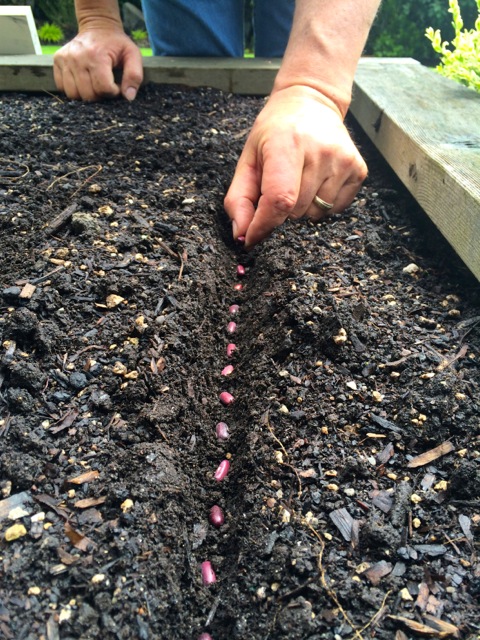Given the ridiculous length of my last blog post, I can’t believe I forgot something, but I did!
(To begin at the beginning of my wonderings about number lines, start here.)
When the K-2 teachers were discussing contexts for equally spaced intervals, Becky Wright, a truly amazing kindergarten teacher, thought of a brilliant one: seed spacing!

She and her class were already planning to build gardens this spring. She was already planning to bring in members of the community to teach kids about gardening. But now, when planning the garden, Becky has many opportunities to think about intervals and scale with kids. For example:
Broccoli seeds are spaced 12″ apart.
Radish seeds are spaced 3″ apart.
Why?

There is great math to explore whether you choose to plant by arrays or rows. For kids working on number lines, I love rows. Think about questions like, how many tomato plants will fit in a 10′ bed? How many carrots?
Home and professional gardeners know, the spacing isn’t arbitrary. What happens if the plants are too close together? Too far apart? This isn’t pseudocontext: look how seriously gardeners take spacing.
Once Becky and her kids figure out what they want to plant, they’ll need to do the math for each vegetable, and then get outdoors and measure the spacing when they’re ready to plant. It will be great, dirty, wholesome work, and the kind of work that helps kids develop the Equal Interval Principle.

